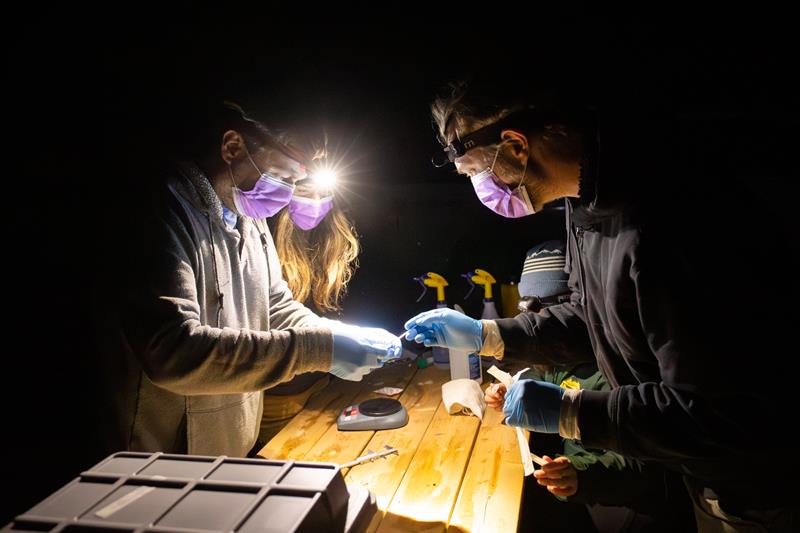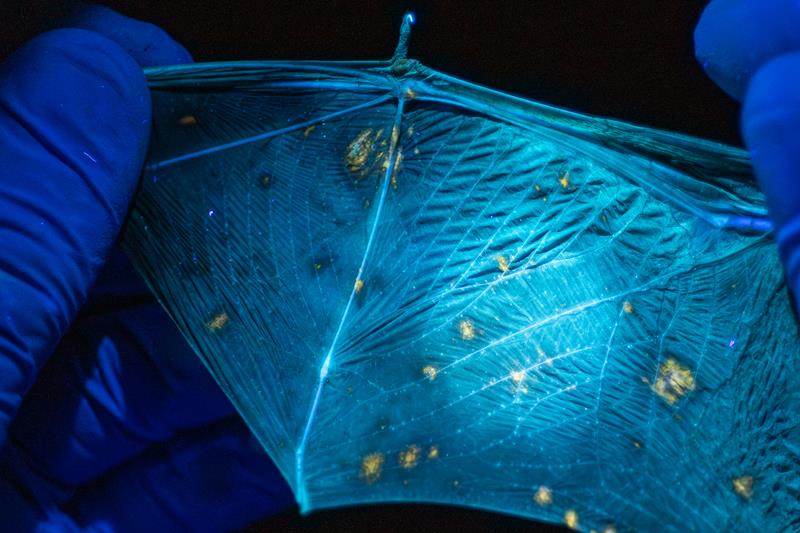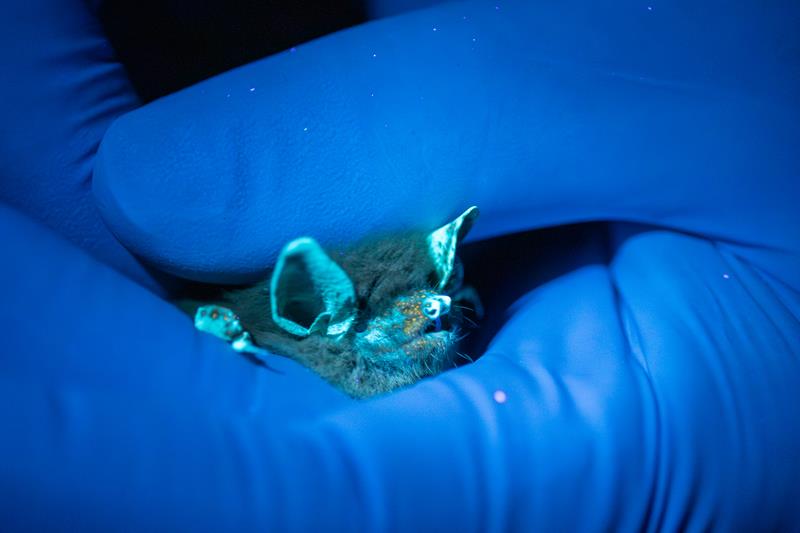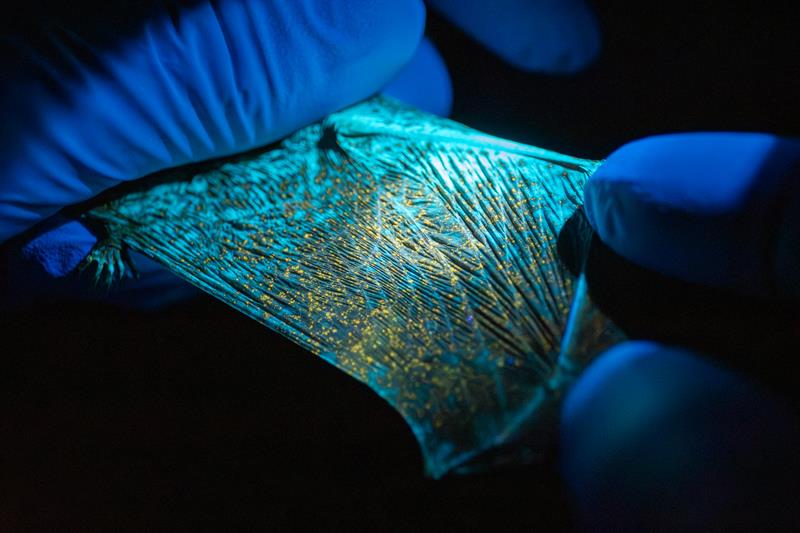This spring we confirmed, for the first time, the presence of white-nose syndrome (WNS) in Alberta. The affected region includes badland habitats along the Red Deer River, in the vicinity of Dinosaur Provincial Park. Along with its various tributaries, the Red Deer River badlands are the largest known bat hibernation area in the province.
This fungus primarily grows during the winter while bats hibernate. However, there are few known bat hibernacula in Alberta where bats can be directly observed. Instead, WNS was confirmed through examination of bats captured during early May, soon after emergence from hibernation. The conclusion that WNS occurs in Alberta was based on histology (microscopic examination) of tissue samples showing fungal hyphae penetrating the bat’s skin (completed at the University of Calgary), as well as orange florescence under ultraviolet light (see photos), minor scarring, and the genetic detection of Pseudogymnoascus destructans (Pd; the fungus that causes this disease) on the bat’s wing. In total, three Little Brown Myotis at two separate locations were confirmed to have this disease, but that’s only a trivial portion of the number of bats likely to be impacted.
The detection is the result of spring surveys completed as a collaboration between Wildlife Conservation Society Canada and Alberta Environment and Protected Areas (and many volunteers) to better understand the impacts that WNS is having on Alberta’s bats. This work follows our discovery of Pd in 2022 in the same area. The next critical step is to confirm if WNS is resulting in population decline; monitoring to already underway to address this issue.
The good news is that work in the region is supporting new investigations into white-nose syndrome and bat biology that offer hope for improving our ability to manage this disease and respond to future conservation challenges.
Thank you to all those who supported this project. We received funding for this project from the Government of Alberta, Environment and Climate Change Canada, Alberta Conservation Association, Molson Foundation, and several private donors. Laboratory work was completed by the University of Calgary Faculty of Veterinary Medicine (with support from the Canadian Wildlife Health Cooperative) and the University of Guelph Animal Health Lab.
Additional information can be found on the Government of Alberta’s website: https://www.alberta.ca/white-nose-syndrome.




Photos by Jason Headley.
